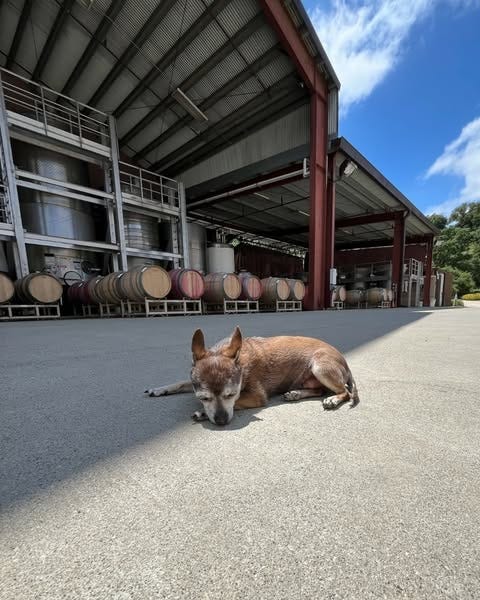Talk Directly to Your People
Your Most Valuable Content Can’t Be Googled
Lately, I have been reminded of something very important: the posts where I speak directly to my target audience (wine brands) and speak from my own experiences perform far better than those where I’m sharing generalized marketing tips.
It’s not that those marketing tips aren’t valuable—they are—but they are tips that can easily be googled (or Chat GPT’d as the case may be) and are, therefore, not as interesting as those where I’m touching on issues specific to wine brands. What people engage with most are the conversations they can’t get anywhere else—the ones that feel specific, relevant, and deeply connected to them and their problems and excitements.

My top conversations here on Substack seem to prove this. “Is WineTok Hurting the Wine Industry?,” “Unpacking the 2025 DTC Wine Symposium,” “Documenting Harvest,” and “A Michelin Star Winery,” all work because they’re extremely relevant to the people I’m writing for. They are rooted in real conversations and challenges happening within the wine industry.
So, I think it’s worth reminding you all how important it is to know who you’re talking to when you’re creating content, especially coming off of last week’s post (also a top performer, btw), “How Many Ways Can I Say, "It's Pruning Season?".”
Knowing your audience and speaking directly to them is what makes content valuable.
If you’re a winery, this means:
Ditching the overly broad wine education posts and talking about your experiences. Instead of “What is smoke taint?” make it “What does smoke impact mean for our winery, and how are we dealing with it?” Your audience can get generic wine facts anywhere, but they can’t get your winemaker’s take on this year’s challenges or your team’s thoughts on a new vineyard experiment.
Learning what problems your target audience has that another winery’s audience wouldn’t have, and addressing those problems. E.g. A winery targeting younger, new-to-wine drinkers vs. a winery catering to more established, adventurous wine drinkers:
Winery Targeting Gen Z & Newer Wine Drinkers: This winery’s audience might feel overwhelmed by traditional wine language, unsure of what to order, or hesitant to ask questions. Their content could focus on making wine more approachable, answering the questions they may be embarrassed to ask, and creating a welcoming, judgment-free space both online and in the tasting room.
Example content: “Wine tasting notes that somehow make sense,” where you talk about mildly outrageous/pretentious wine-tasting notes and talk about why they work and what they can mean for the wine (freshly opened can of tennis balls? New garden hose? Salt-water taffy? seriously the content writes itself)
Winery Targeting Established & Adventurous Wine Drinkers who are Millennials or Gen X: This audience is already comfortable with wine basics and is looking for deeper engagement. They’re excited about niche topics, rare varieties, and unconventional winemaking techniques, basically, shit they can brag about to their buddies.
“Why are we aging this rosé in clay amphora?” or “Hybrid varieties and why they are dope as fuck”
Both wineries are talking about wine, but they’re tailoring their content to the specific challenges, interests, and knowledge levels of their audience.
Basically, you want to limit the amount of “Googleable" content you’re putting on your page and instead lean on content that’s niche/specific to you and your peeps. Oh, you want more examples? You got it, boo:
Googleable Content vs. Niche Content Speed Run
Instead of “What is Carbonic Maceration?”
Try “Why We Chose Carbonic Maceration for This Year’s Syrah (And How It’s Going)”
Instead of “How to Host a Wine Tasting at Home”
Try “What We’ve Learned From Hosting 1,000+ Wine Tastings at [Winery Name]”
Instead of “The Best Wines for Summer”
Try “The One Wine Our Team Can’t Stop Drinking This Summer”
Instead of “Meet Our Winemaker”
Try “5 Things You Didn’t Know About [Winemaker’s Name]”
Instead of “What is Dry Farming?”
Try “Our Irrigation System Broke—Why We Aren’t Worried About Fixing It”
Instead of “Why Regenerative Farming Matters”
Try “Why It’s Worth Farming Regeneratively (Even Though It’s a Challenge)”
Instead of “How Long Does Wine Last After You Open It?”
Try “We Opened a Bottle of Our [Vintage] Syrah Three Days Ago—Here’s How It Tastes Now.”
You get the idea.
So, what’s the takeaway here?
Your most valuable content isn’t the stuff that anyone can Google. It’s the stuff only you can talk about. It’s your perspective, your experiments, and your challenges. It’s the things that make your brand feel like a living, breathing entity rather than just another winery trying to sell wine.
It’s the reason why some of the most engaging posts from wineries aren’t their beautifully curated bottle shots but raw, real-life moments and topics that their fans care about:
Like when Foxen Winery shared about the passing of their vineyard dog, Chingy (RIP Chingman, we love you so much pal.)
And when Tablas Creek talked about their favorite tool, the ahso, and how they used it to open up an older vintage wine for a celebration of life
And when Patrick Cappiello talked about when and why he adds sulfur to his wine
These things are personal, rooted in experience, and they give people a reason to care about these wineries.
So, the next time you sit down to write a caption, a blog post, or a Substack article, ask yourself:
Can someone find this information anywhere else? And if so, is there a way for you to make it more personal to you and/or more relevant to your target audience?






Great article, I've been focusing on this myself for the past 6 months (still learning), but it has been showing results!